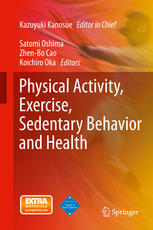

Most ebook files are in PDF format, so you can easily read them using various software such as Foxit Reader or directly on the Google Chrome browser.
Some ebook files are released by publishers in other formats such as .awz, .mobi, .epub, .fb2, etc. You may need to install specific software to read these formats on mobile/PC, such as Calibre.
Please read the tutorial at this link: https://ebookbell.com/faq
We offer FREE conversion to the popular formats you request; however, this may take some time. Therefore, right after payment, please email us, and we will try to provide the service as quickly as possible.
For some exceptional file formats or broken links (if any), please refrain from opening any disputes. Instead, email us first, and we will try to assist within a maximum of 6 hours.
EbookBell Team

0.0
0 reviewsThe aim of this book is to present current views about physical activity and the benefits of physical activity in preventing and ameliorating various health conditions that are of worldwide concern. This book was developed as a compilation of the accomplishments of the five-year Global COE (Center of Excellence) “Sport Sciences for the Promotion of Active Life” Program at the Faculty of Sport Sciences of Waseda University, Saitama, Japan. The first part establishes the research methodology and discusses the current status of physical activity. Topics covered include the prevalence of physical inactivity and highly sedentary behavior in different populations as well as strategies that can be adopted to promote physical activity. The second part focuses on the physiological effects of physical activity. Topics covered include physiological responses to exercise by the autonomic nervous system, the endocrine system, vascular functioning, postprandial blood glucose control, and inflammatory processes. The relationship between exercise and appetite is discussed, as is the influence of exercise on food intake and weight regulation. Additionally, the influence of exercise on protein regulation and posttranslational modifications is introduced. The final part discusses the role of physical activity in preventing lifestyle-related health issues and improving the quality of life, especially for the elderly. The contents should be of interest to anyone who is concerned with the human physiologic response to exercise and the promotion of healthy lifestyles, including sports and exercise science researchers as well as those involved with medicine, public health, physiology, nutrition, and elder care.